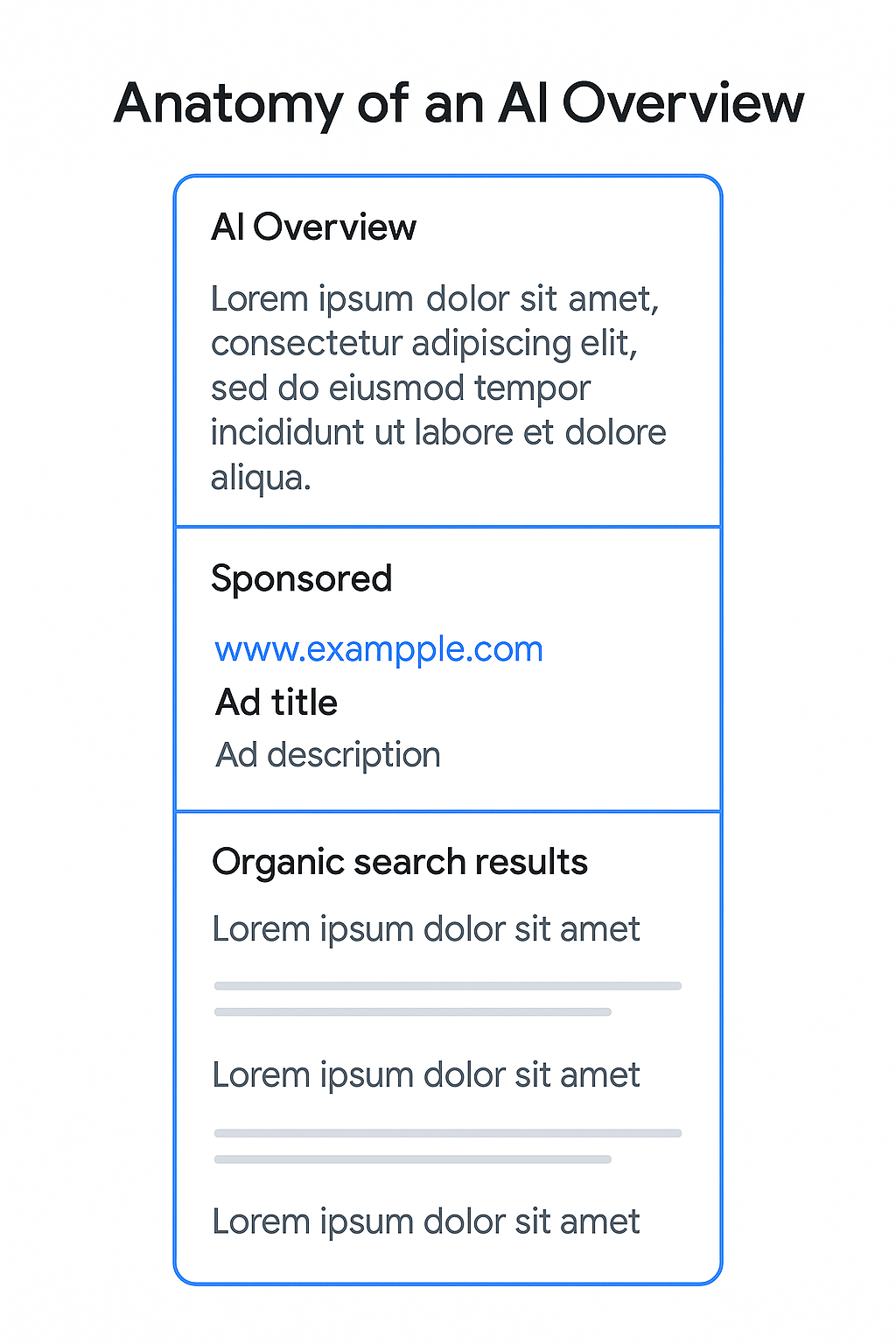You’ve probably noticed the change: search results on Google don’t look the same anymore. That’s because of AI Overviews (AIOs), those boxed summaries at the top of the page that piece together information using generative AI. What you might not have noticed, though, is that ads are starting to quietly move in.
They’re subtle. They’re woven in. And they’re nothing like the usual text ads we’ve been optimizing for years.
Travel, Shopping, and Local: Where Ads Are Starting to Show Up
If you’re in travel, e-commerce, or local services, you’re now officially in the first wave. Google’s starting to test paid placements inside AI Overviews for categories like:
Travel and itinerary planning
Product discovery and online shopping
Local services and recommendations
It makes sense when you think about it. These are high-intent, high-conversion queries. If someone’s asking about the best place to stay on the strip in Las Vegas or what sneakers are trending under $100, there’s purchase intent baked into the question.
The new ad placements live inside the generative response. That means they’re part of the AI’s answer, not off to the side or above the fold. That changes how users encounter them entirely.
Designed to Blend In, Not Break the Flow
These aren’t the bright, bordered ads of old. They don’t pop. In fact, they’re meant not to.
Google’s documentation describes AI Overviews as summaries that help users quickly get an overview on a topic by surfacing key information from a variety of web sources. Advertisements inside them follow that same rhythm – they feel like part of the story, not an interruption.
That subtlety is strategic. Google has always optimized for user experience, and jarring ad placements don’t fly in an environment where people are looking for direct answers. Instead of standing out, these ads flow with the answer, keeping user engagement high.
But that also means your ad copy needs to feel like it belongs there.
AI Answers Change How We Click – So How Do You Sell?
The old CTR game doesn’t apply here. People reading AI Overviews might not behave the same way they did on traditional search pages. They’re reading less, clicking less – and yet, converting more intentionally.
Here’s the shift: users are being pre-qualified by the AI itself. By the time someone gets to your link, they’ve read the summary and are already further down the funnel. That makes every click count more. But it also means the ad has to earn its place within that flow.
Which raises a big question for advertisers: Are your landing pages ready for visitors who didn’t come in through curiosity, but clarity?
This Is Not Your Old-School Ad Placement
You can’t just repurpose your legacy text ads here. Traditional ad formats weren’t designed for this kind of interaction.
In the past, you could throw up a keyword-targeted ad, hope for clicks, and optimize later. In an AIO environment, your ad has to match the tone, intent, and informational depth of the AI answer itself. That’s not just about copy – it’s about context.
Plus, placement isn’t static. AI Overviews can vary depending on query specificity, user location, search history, and more. That variability means you won’t always know exactly where or how your ad will show. Testing becomes crucial.
Realign Your Copy for a Nonlinear User Journey
Here’s the thing: users aren’t following a straight line anymore. They’re not going search → click → browse → buy. They’re reading AI Overviews, maybe clicking a source, maybe refining their query, maybe jumping to a product page directly.
That means your ad messaging – and the content behind it – has to work across multiple intent stages at once.
Is your copy clear enough to inform, but compelling enough to convert? Does your landing page reinforce what the AI just said, or does it contradict it? Even subtle mismatches could send users bouncing right back.
Think of it like this: you’re not selling to the user; you’re selling with the AI.

What’s Being Shown and Why?
According to Google’s own documentation, AI Overviews are built from publicly available content that Google deems helpful, reliable, and people-first. That same logic seems to be informing how ads are being selected, too.
Though details are sparse, early examples suggest that ad relevance is based on both content alignment and query context. So if your product naturally fits into the AI’s summary – congrats, you’re in. If it feels forced or salesy? Probably not going to make the cut.
What we don’t know yet is: how much control advertisers will have. Can you track these impressions separately? Can you optimize placements over time? Can you preview how your ad shows up inside the AIO container?
The answers will shape the future of performance marketing.
Are You Ready for Invisible Ads?
This quiet shift may feel strange, but it’s real. And it’s happening fast.
The line between organic, AI-generated content and paid media is blurring. If you’re a marketer, you need to rethink how visibility works and how subtlety might outperform flash.
Are your ads ready to show up without standing out? Because increasingly, that’s what it takes to get seen.
Let’s talk about your business goals and plan a content strategy for AI Overviews.

